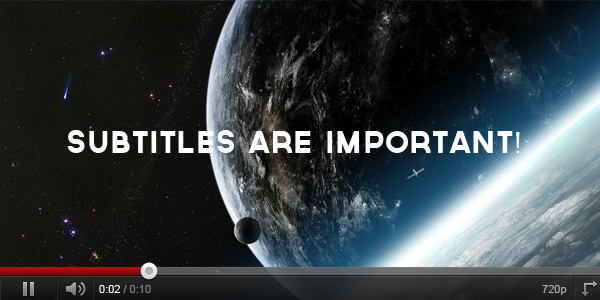Online video is preferred over news, sports and daytime programming according to a recent report from the Interactive Advertising Bureau.
The internet is buzzing with information, news stories, trending topics and personalities and the medium of choice for online video viewing is YouTube. Google is the parent company of YouTube and together they are the #1 and #2 most popular search engines in the world. For these 2 important search media to know what the content of your video is, you need to do the legwork and tell them about the content of your video.
Here are the reasons you would want to have your videos transcribed and those transcriptions translated.
- Visibility
Both Google and YouTube index text that is found in Closed Captions (CCs) – they do not index the tags or description of the videos. At a minimum, all your videos must have closed captions for people to be able to find them based on indirect searches. Captions and transcripts also enable deaf or hard of hearing viewers to make use of your videos.The internet is made up of more than one language. In order to reach %90 of the internet audience, your content needs to appear in 13 languages. Your videos are no different and translating your transcriptions will make them more visible and available to all internet users. Video search results with captions and transcripts also rank higher as they allow access to information in multiple formats and for a wider audience segment. - Longer View-Time
Studies have shown that captions and transcripts increase view-time for all users. Viewers who watch videos in sound sensitive environments such as their workplace and libraries benefit from the captioning. Foreign viewers who have access to translations of the transcriptions stay engaged and do not click-away from a video with subtitles in their language of choice. - Search Engine Optimization
According to Pixability, “one well-kept secret of video SEO is that both YouTube and Google do index text that is found in closed captions. Many videos come up at the top of searches for keywords that are found only in their closed captions–not in the tags or the description of the video.” The upshot is that you should upload captions to YouTube and consider keywords when producing the spoken content in your videos.
Our project managers can help you with your subtitling needs for YouTube videos and many others. We can show you the best practices, provide transcriptions of your videos and translations of your subtitles in the languages of your choice. We will walk you through uploading them in your YouTube channel and in your videos.
Just contact us at info@link-translations.com to get your transcription and translation needs fulfilled.

